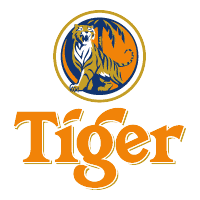
Tuesday Tasting is a regular feature of Lyke2Drink that explores some of the best beers, wines and spirits on the market. This week we taste perhaps the oldest alcoholic beverage in the world.
Mead, or honey wine, is likely the very first alcoholic beverage to touch a human's lips. Theories suggest it was discovered by prehistoric man, a mixture in the wild of honey and water that came into contact with airborne yeast. Chinese researchers and archaeologists from the University of Pennsylvania have uncovered evidence during digs in Henan province showing trace elements of fermented beverages made from honey, hawthorn fruit, rice and grapes in 13 pieces of pottery from 7000 B.C.. This find predates the previous earliest known example of alcohol playing a part in civilization in now what is part of Iraq by 1,500 years.
While you may have thought mead was last consumed by a royal court in the Middle Ages, the reality is that mead still plays a central role in some African and Eastern European cultures. Additionally, a growing mead making community in the U.S. is producing some interesting beverages.
According to Julia Herz, who heads up the International Mead Association (IMA) in Boulder and runs the website Honeywine.com, there are 100 commercial meaderies operating in the U.S. today, up from about 30 in 1998. About 50 of these are pure meaderies and the rest are wineries or breweries who make beverages using honey. According to the IMA, to be a mead, the product must be fermented from at least 51 percent honey. Meaderies can add fruits, herbs, spices and other flavor adjuncts either during fermentation or after.
The IMA plans to host the fifth annual Mead Festival on Feb. 9-10, 2007, in Denver. The IMA expects 100 commercial meads to be available for tasting and about 1,000 people to turn out for the fest. Lyke2Drink recently had the chance to sample seven meads:
Chaucer’s Raspberry Mead (California, 10.5%): Light red color. Sweet, but not cloying raspberry nose and flavor. Great summer time deck drink.
Desi’s Raspberry Lover’s Sparkling Honey Wine (North Carolina, 12%): A nice nose with hints of honey. The raspberry flavor is in the background and this mead is crisp.
Heidrun California Orange Blossom Natural Sparkling Mead (California, 12.5%): This one could fool many sparkling wine fines. Good depth to the flavor profile, just a slight bit of honey in the nose that tells you this might be a mead. Good balance throughout.
Long Island Meadery Apple Cyser (New York, 13%): This drinks a bit different. Not quite a cider, not quite a mead. Some wine qualities. The apple is present, but subdued. I actually liked this much better about half way through my glass and found myself wanting more.
Oliver Camelot Mead (Indiana, 11%): The influence of the sister winemaking operation is clear in this mead. Good balance, reminds me of a Seyval wine from the Finger Lakes. Pleasant with food.
Redstone Meadery Black Raspberry Nectar (Colorado, 8%): This is what happens when a new age fruit drink meets an ages old alcoholic beverage. Intense and sweet, refreshing under the right circumstances. Not balanced, but I don’t believe that was the intent.
Redstone Reserve 2002 (Colorado, 13%): Mixed with raspberry puree this mead is intense and drinks a bit like a brandy. An interesting display of flavors and very much worth a try.




























